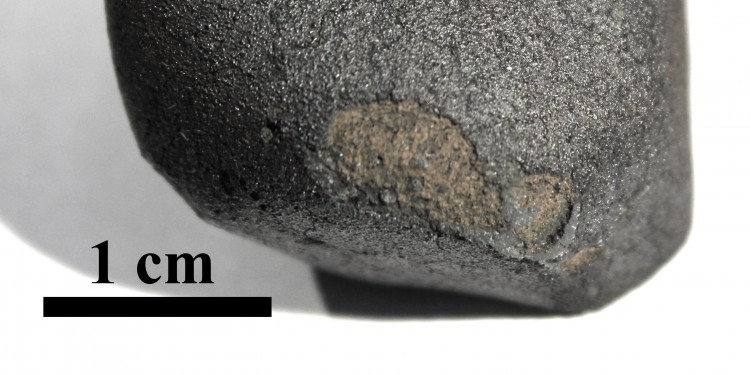
Oldest Carbonates in the Solar System
A meteorite that fell in northern Germany in 2019 contains carbonates that are among the oldest in the solar system; it also evidences the earliest presence of liquid water on a minute planet. The high-resolution Heidelberg Ion Probe – a research instrument at the Institute of Earth Sciences at Heidelberg University – provided the measurements. The investigation by Heidelberg’s Cosmochemistry Research Group led by Prof Mario Trieloff was part of a consortium study coordinated by the University of Münster with participating scientists from Europe, Australia and the USA.
Background and methodology
Carbonates are ubiquitous rocks on Earth. They can be found in the mountain ranges of the Dolomites, the chalk cliffs on the island of Rügen, and in the coral reefs of the oceans. They remove large amounts of the greenhouse gas carbon dioxide from the atmosphere, making them relevant for the climate. Unlike the Earth of today, there were no carbonate rocks during the formation of primordial earth, when our planet was blazing hot.
The meteorite that fell to earth in September 2019, dubbed the Flensburg meteorite for where it was found, is classified as a carbonaceous chondrite, a very unusual and rare form of meteorite. “In the early Solar System, the rock was extensively exposed to a watery fluid and thus formed water-bearing silicates and carbonates”, explains Prof Addi Bischoff from the Institute for Planetology in Münster. Addi Bischoff and his colleague Dr Markus Patzek view the meteorite as a possible building block that may have delivered water to the planet Earth early on. The Flensburg meteorite was dated at Heidelberg University using the ion probe. “Such measurements are extraordinarily difficult and challenging, because the carbonate grains in the rock are extremely small. Further, the isotopic measurements must be very precise, taken within a very tight range of just a few micrometres in diameter – thinner than a human hair,” explains Thomas Ludwig of the Institute of Earth Sciences.
The dating method is based on the rates of decay of a naturally occurring isotope – the decay of the short-lived radionuclide ⁵³Mn, which was still active in the early Solar System. “Using this method, the most precise age determinations thus far indicated that the parent asteroid of the Flensburg meteorite and the carbonates formed only three million years after the formation of the first solid body in the Solar System,” explains Mario Trieloff, who directs the Cosmochemistry Research Group at the Institute of Earth Sciences in Heidelberg. The carbonates are therefore more than a million years older than comparable carbonates in other types of carbonaceous chondrites. Besides the age determinations based on the radionuclide ⁵³Mn, the tiny carbonate grains were also examined for their carbon and oxygen isotope composition with the aid of the Heidelberg Ion Probe. The carbonates apparently precipitated out of a relatively hot fluid shortly after the formation and heating of the parent asteroid. “They therefore evidence the earliest known presence of liquid water on a planetary body in the early Solar System,” states Mario Trieloff.
Research partners and funding
In all, 41 researchers from 21 institutions in Germany, France, Switzerland, Hungary, Great Britain, the USA and Australia contributed to the study, which was published in the journal Geochimica et Cosmochimica Acta. Work at the University of Münster was carried out under the auspices of the Transregional Collaborative Research Centre “Late Accretion Onto Terrestrial Planets” (CRC TRR 170). The research at Heidelberg was funded by the Klaus Tschira Foundation gGmbH. Ruperto Carola acquired the ion probe with funding from the German Research Foundation.
Original publication
A. Bischoff, M. Patzek, T. Ludwig, M. Trieloff et al.: The old, unique C1 chondrite Flensburg – insight into the first processes of aqueous alteration, brecciation, and the diversity of water-bearing parent bodies and lithologies. Geochimica et Cosmochimica Acta 293 (2021), 142-186; DOI: 10.1016/j.gca.2020.10.014
